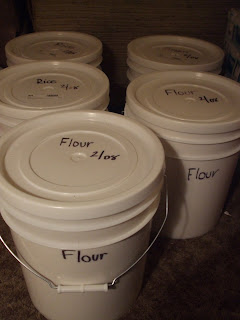- The United Nations is reporting that they are not able to continue to feed the numbers of hungry people they have been feeding. The article states, "With voluntary contributions from the world's wealthy nations, the WFP [World Food Program] feeds 73 million people in 78 countries, less than a 10th of the total number of the world's undernourished. But with annual food price increases around the world of up to 40% and dramatic hikes in fuel costs, that budget is no longer enough even to maintain current food deliveries." http://www.guardian.co.uk/environment/2008/feb/26/food.unitednations
- China is facing renewed fears that its growing demand for grain to feed the world’s largest population may lead to imports from international markets, driving prices higher and spurring further food inflation. http://www.ipsnews.net/news.asp?idnews=41345
- Venezuela is experiencing severe food shortages, and is halting exports of many food items. http://www.news.com.au/story/0,23599,23277253-1702,00.html
- The world’s wheat stockpiles have fallen to their lowest level in 30 years, and stocks in the United States have dropped to levels unseen since 1948. http://www.nytimes.com/2008/02/13/business/13wheat.html?_r=2&ref=business&oref=slogin&oref=slogin
- Smithfield Foods, one of the largest pork processors in the United States, is reducing its U.S. breeding herd by 4% to 5%, or 40,000 to 50,000 sows, because of rising grain costs. That means Smithfield ultimately will produce 800,000 to 1 million fewer market hogs annually, the company said. Smithfield currently raises 18 million market hogs a year. This article was on CNN Money, but is no longer available online.
- In the wheat price surge this week, the leading wheat contract has risen by more than the entire worth of the contract just months ago. Prices rallied by $5.75 a bushel on Monday, being up by nearly 30% at one point compared with Friday’s close. Eight months ago on June 19, the lead wheat contract settled at over $5.00 a bushel. http://nqr.farmonline.com.au/news_daily.asp?ag_id=48995
All of this is making me distinctly nervous. Food shortages around the world, record wheat prices, and our idiotic president is encouraging more of our corn be turned into biodiesel and ethanol. It is enough to make me really glad I am starting a garden this year. And determined to grow a lot of potatoes. We also did this:













